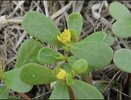Another big problem with learning about digestibility of omega-3 is created by scientists themselves. If you read some studies you will come to the conclusion that there is no problem at all. That we can in fact digest almost 100% of omega-3 lipids. While on the other hand other scientists claim that our digestion of those lipids is close to 0%. Now that's a huge difference! So how do we explain something like that?
Well, the explanation lies in the definition of digestibility. In this case, the digestibility of lipids. If you define digestion of lipids in one way, you will get the number close to 100%. If you define it in a different way, you will get digestion close to 0%.
So what is the true definition of lipid digestion? Well, that depends on what you want to do with it? Do you want to use lipid just for energy purposes, or do you want to use lipid for structural purposes? If you want to use you lipid just for energy, then simple absorption of triglycerides will do just fine. If you want to use it for structural purposes, then you want those triglycerides to be broken down into free fatty acids and monoglycerides.
Also, is the lipid prone to oxidation? Because, you can digest and absorb lipid that became oxidized in your digestive system, but in that case the lipid will became unusable for certain functions. So you also want to digest the lipid without oxidation in digestive system.
Ideally, you want your lipid to be protected from oxidation in the stomach, and to be easily released and fully digested in the intestines.
With ordinary concentrated fish oil that is not possible.
Well, the explanation lies in the definition of digestibility. In this case, the digestibility of lipids. If you define digestion of lipids in one way, you will get the number close to 100%. If you define it in a different way, you will get digestion close to 0%.
So what is the true definition of lipid digestion? Well, that depends on what you want to do with it? Do you want to use lipid just for energy purposes, or do you want to use lipid for structural purposes? If you want to use you lipid just for energy, then simple absorption of triglycerides will do just fine. If you want to use it for structural purposes, then you want those triglycerides to be broken down into free fatty acids and monoglycerides.
Also, is the lipid prone to oxidation? Because, you can digest and absorb lipid that became oxidized in your digestive system, but in that case the lipid will became unusable for certain functions. So you also want to digest the lipid without oxidation in digestive system.
Ideally, you want your lipid to be protected from oxidation in the stomach, and to be easily released and fully digested in the intestines.
With ordinary concentrated fish oil that is not possible.








